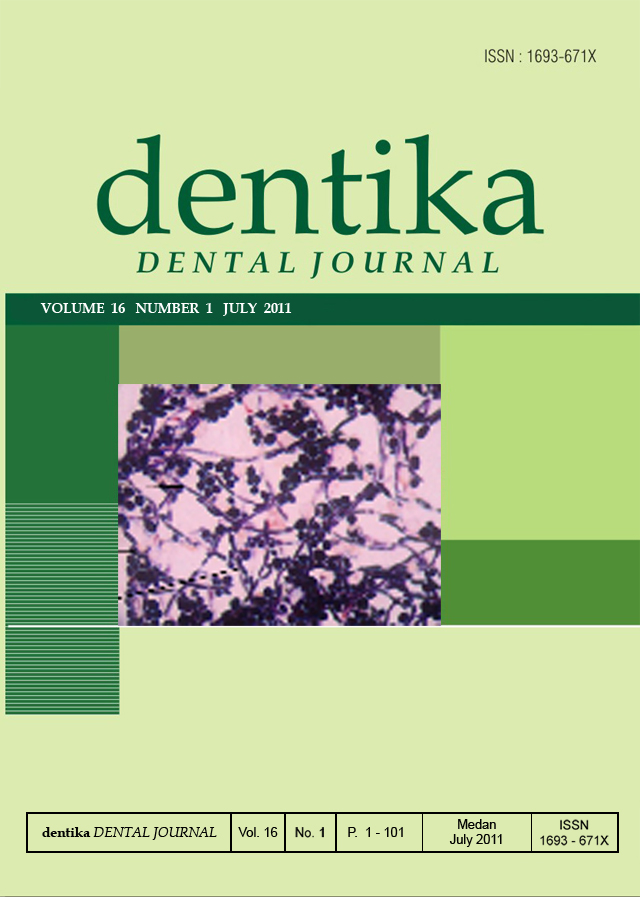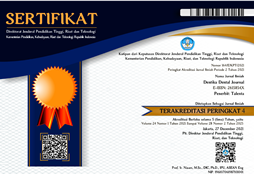C-TELOPEPTIDE PYRIDINOLINE LEVEL IN GINGIVAL CREVICULAR FLUID AS INDICATOR OF ALVEOLAR BONE RESORPTION
KADAR C- TELOPEPTIDA PIRIDINOLIN PADA CAIRAN KREVIKULAR GINGIVA SEBAGAI INDIKATOR ADANYA RESORBSI TULANG ALVEOLAR
DOI:
https://doi.org/10.32734/dentika.v16i1.1885Keywords:
alveolar bone resorption, C- telopeptide pyridinolineAbstract
Periodontal disease is an inflammation and degeneration of chronical dental support tissue, accumulative, and progressive
that caused tooth loss. Periodontal disease is caused by bacteria that has an ability to activate host response to produce
pro-inflammatory mediator. Pro-inflammatory mediator causes collagen fibers degradation or destruction in periodontal
tissue. Collagen cross- link of peri odontal tissue would be broken down and released into serum, and then excreted
through urine. Collagen cross-link is called pyridinium cross-link, such as pyridinoline, deoxypyridinoline, N-telopeptide,
and C- telopeptide (ICTP). This study was to investiga te the level in gingival crevicular fluid as an indicator of alveolar
bone resorption. This study used 24 subjects with periodontal disease and 6 healthy subjects. Dividing of periodontal
disease was based on periodontal index and every subject had minimum 20 teeth in mouth. Gingival crevicular fluid was
taken at mesial site of maxillary posterior tooth by paperpoint and was measured by ELISA technique. The result showed
that the lowest level of ICTP was in control group, and the highest level was in grade 3 periodontitis group. The level of
ICTP increased followed by periodontal disease progression. The result of Kruskal- Wallis-H and Mann-Whitney-U test
showed th at was significant difference in ICTP between subject with and without periodontitis (p<0.05). It can be
concluded that ICTP level in gingival crevicular fluid can be used as indicator of alveolar bone resorption in periodont al
disease subjects.


















